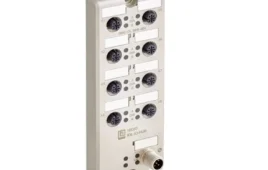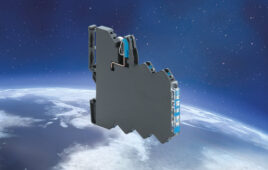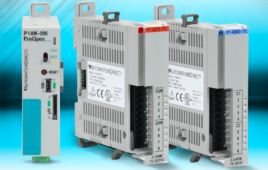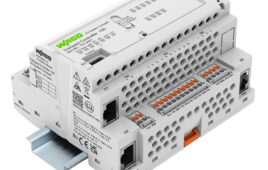In many industrial applications, cost is the main criterion for choosing continuous linear position feedback sensors. Under these circumstances, the obvious choice is typically a resistive linear potentiometer, or linear pot. While linear pots meet many cost targets, they have drawbacks. Foremost is wear‚â€â€they rely on mechanical contact between a wiper and a resistive element to produce an output signal. Wear can cause erratic and unstable output signals. A suitable alternative would be a linear position sensor with the same form factor, but which does not rely on electro-mechanical contact.

Many industrial applications, such as packaging, seek low cost sensors for various positioning feedback needs. A new type of sensor, the Pulsed-Inductive Linear Position Sensor, can be a suitable replacement for linear pots in such applications.
Such an alternative is the Pulsed-Inductive Linear Position Sensor. It only looks like traditional resistive linear potentiometers. It is low in cost like linear pots, but it uses non-contact methods for continuous, absolute, analog position feedback. Without mechanical contact, wear is not an issue.
Output Signal Alternatives
Like resistive linear pots, the Pulsed-Inductive sensors are available with analog voltage outputs (-10 to +10 V or 0 to +10 V). Unlike linear pots, these sensors are available with analog current outputs (0 to 20 mA or 4 to 20 mA), without the need for external signal conditioning. Analog current signals offer better electrical noise immunity and allow longer cable runs compared to analog voltage signals.

Pulsed-Inductive linear position sensors are form-factor replacements for traditional resistive linear potentiometers, including the sliding plunger.
Pulsed-Inductive linear position sensors are form-factor replacements for traditional resistive linear potentiometers, right down to the familiar sliding plunger. Thus, they suit linear feedback applications such as those found on plastic injection molding machinery, packaging machinery, hydraulic motion bases, and woodworking machinery. They also meet low-cost, continuous
position feedback needs, such as those found with hydraulic or pneumatic cylinders.
By Scott Rosenberger at [email protected]
www.balluff.com/biw
::Design World::
Filed Under: LINEAR MOTION, SENSORS, TEST & MEASUREMENT





Tell Us What You Think!